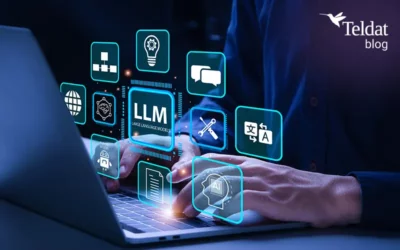 The current Covid-19 crisis has some of you wondering if it is the result of a biological weapon from a shady military lab. The answer is a simple no! As the scientific community so rightly states, nature is enough and more than enough to make new viruses like this all by itself.
The current Covid-19 crisis has some of you wondering if it is the result of a biological weapon from a shady military lab. The answer is a simple no! As the scientific community so rightly states, nature is enough and more than enough to make new viruses like this all by itself.
It has reminded us of this through numerous relatively recent cases. The last century saw the Spanish Flu, Zika, HIV, the Ebola virus, Influenza A, etc., while this century has witnessed the SARS and MERS coronaviruses.
Economic and scientific progress doesn’t always help to reduce the risk of such pandemics. It is a fact that the large volume of international flights today is a formidable factor against it. Health authorities have long been warning that this situation could foster the appearance of pandemics.
However, we must be optimistic regarding scientific and technological progress. Huge advances in Biotechnology and other related sciences should furnish ever-better weapons to fight these pandemics.
And what about the advances in information and communication technologies? Can they help us to fight this battle? The answer is without doubt a resounding yes!
The role of information and communication technologies in the fight against pandemics
Computers have allowed us to sequence the genome of the new virus in record time. Today, as never before, the Internet has allowed scientific communities to share advances in research into the new virus practically in real time.
However, not everything has to do with computing power or communications among scientific communities.
At the time of writing this blog post, almost half of the world’s population is under lockdown. This is an essential measure to stop the chain of transmission and give healthcare systems time to recover, rearm and reorganize themselves. But such measures cannot continue for too long or the economy will be plunged into a crisis of unknown proportions. So, what is the plan? What will governments do when they must relax the containment measures?
Scientists warn that a possible vaccine or specific treatment will be a while in arriving. What’s more, there’s no guarantee of finding one – for example, no cure has been found for Ebola or Dengue fever.
If we can’t rely on a specific treatment in order to be able to relax containment measures, then we are once again faced with the possibility of going through another exponential transmission phase as soon as said containment measures are relaxed.
While there are undoubtedly measures that can be taken (e.g., avoiding mass gatherings, changing people’s habits, etc.), without proper monitoring, we would go back to another uncontrolled situation.
It is precisely at this point of monitoring the spread of the disease that information technologies are going to play a fundamental role. After all, lots of people carry powerful, connected computers around with them capable of tracking all their movements.
Yes, the mobile telephone will likely end up playing a fundamental role in this crisis. And not only through applications that allow us to access emergency services or make a self-diagnosis.
Basically, we need to lower the infection rate, or so-called R naught of the disease, to below 1. This means that each infected person passes the disease to less than one other person, on average, for a long enough time.
So how do we keep R below 1 once mass containment measures are rolled back. It requires us to be very effective in detecting infected people and to immediately identifying all those people who may have been infected. Here is where Mobile Apps can play a fundamental role.
This is not just a theory; it has already been successfully used in many Asian countries, which are managing to more effectively halt the plague.
Korea, for example, in addition to having a very effective diagnosis and isolation strategy, has launched an app called Corona 100m.
The app saw more than a million downloads in the first few days. Among its uses, the app uses government data to notify users when they are entering an area visited by an infected person. It achieves this via geofencing.
Even more impressive is the TraceTogether app developed and launched in Singapore.
This is a voluntary app and uses a phone’s Bluetooth to detect other TraceTogether users nearby. This proximity data is stored on the user’s phone in an encrypted form.
When someone tests positive for the coronavirus, he/she sends the data to the Ministry of Health, which can then send the information to all users of the app. If a user has been near an infected person, the app notifies them and gives them the option to voluntarily share this information with the Ministry of Health.
This avoids imposing stricter measures such as paralyzing the whole country.
The app’s description in Google Play warns that the app will shut down when the epidemic is over.
The following blog post proposes a similar idea to the TraceTogether app but based on P2P technology. The author asks that you to share the following post as much as possible. Click here to see the post
China allows much more direct measures. One such measure is a compulsory app to travel around certain cities whereby users are assigned a color code – green, yellow or red. Red indicates that you have to stay in quarantine. A color code may change because a person, without knowing, has been in contact with someone who’s infected. In this case, the origin of the information and the algorithms are not described.
In Spain, at the time of writing this blog, the first intiatives have already been produced.
The CoronaMadrid app helps people to self-diagnose the virus. User’s must enter their identification data, and the app allows health authorities to contact the user in severe cases.
GPDR and technologies against coronavirus
At the same time, central government has just given the go ahead to use mobile phone location data collected by operators to track the movements of citizens.
All these potential initiatives will undoubtedly drive the debate on respect for citizen privacy.
The countries forming part of the European Union are among those that provide more guarantees when it comes to protecting privacy. However, at the electronic headquarters of the Spanish Data Protection Agency, you can consult one of the exemptions allowed under the General Data Protection Regulation (GDPR):
“…As reasons of public interest protected by legal authorizations that exempt the prohibition, the GDPR itself expressly includes the following assumptions: …
… processing is necessary for reasons of public interest in relation to public health, such as protecting against serious cross-border threats to health…”
In short, tens of thousands of casualties will be claimed by the crisis in western societies. Our recognition of this should cause us to react with all the capabilities that new technologies offer.
In my opinion, our western democratic societies should establish a clear priority to make a respect for privacy compatible with the aim of saving the greatest number of lives. This strikes me as the priority right now. It is undoubtedly a great topic of debate that is coming very soon.
Will we measure up?


























